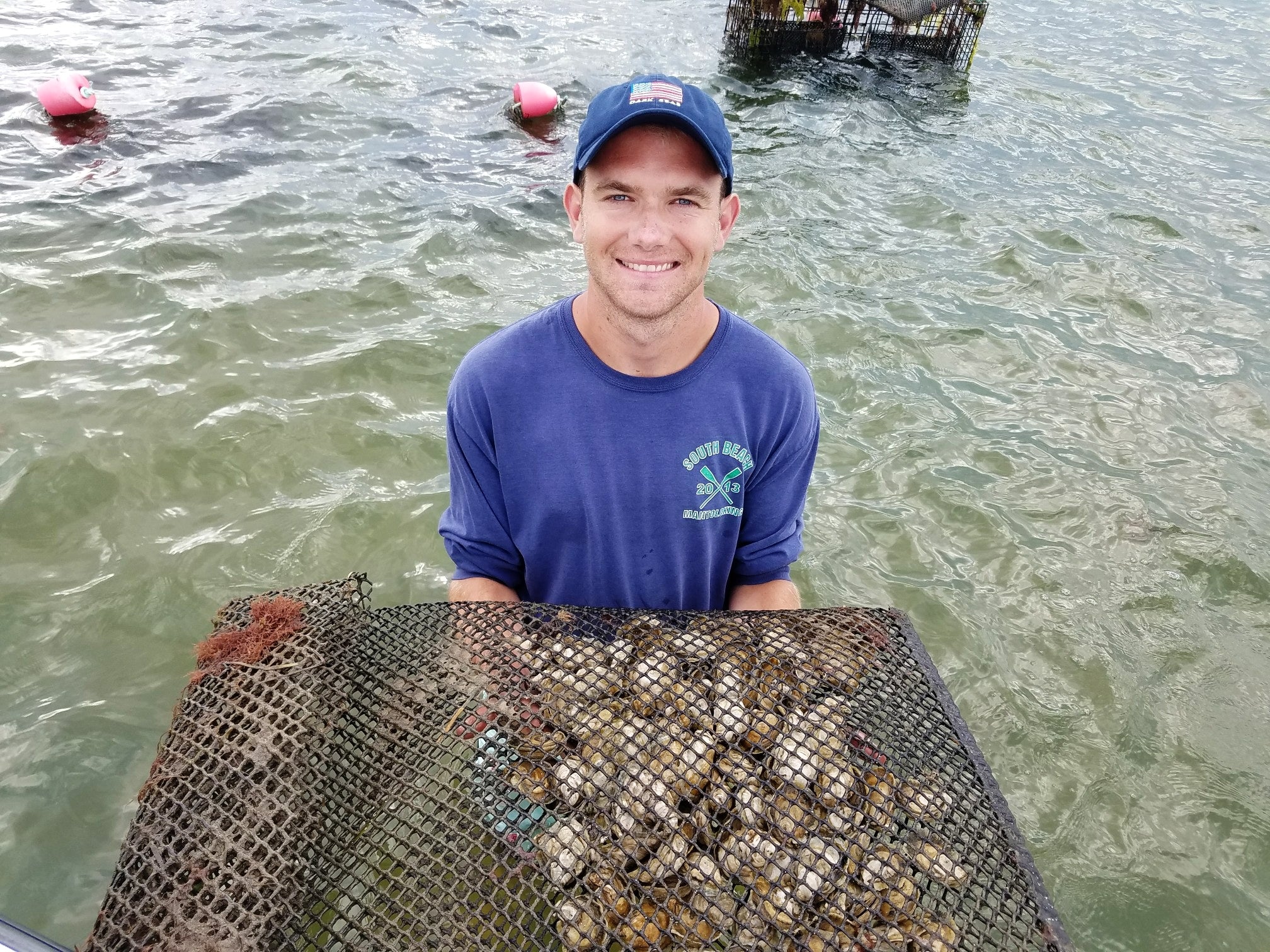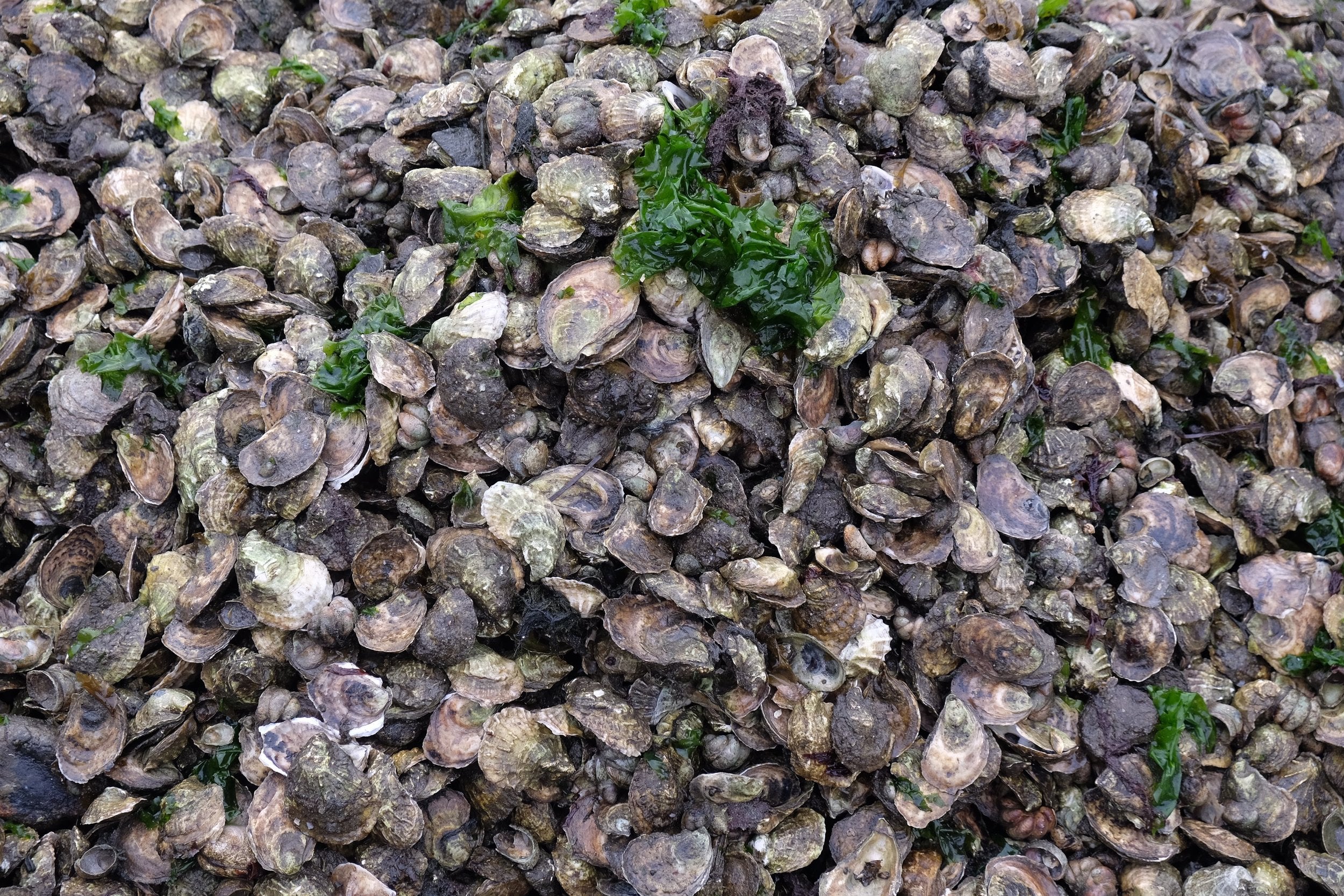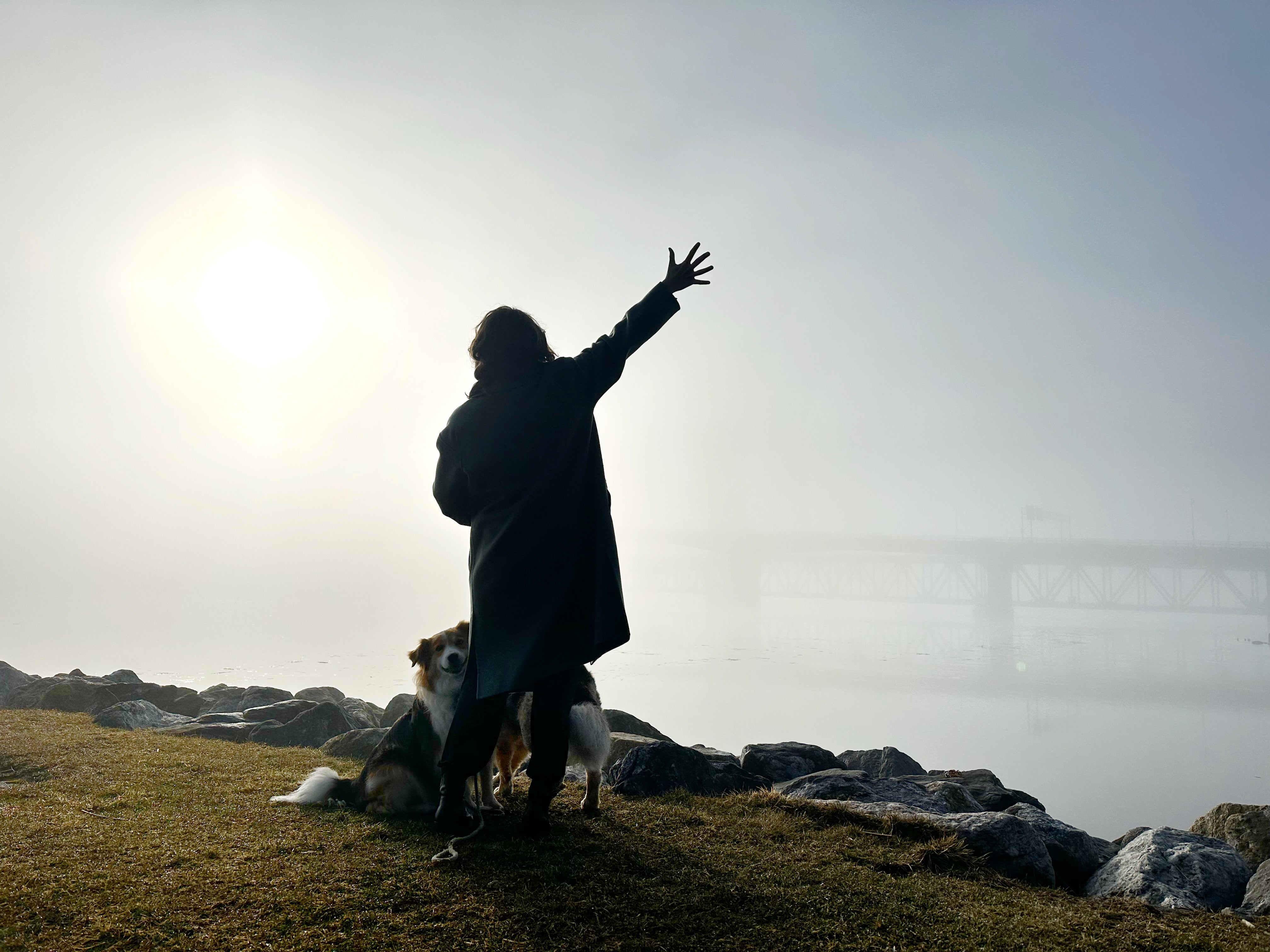The Story of Sloop Point Oyster Farms

Christmas is just around the corner, and it's the most wonderful time of the OYSTER ! I'm singing it, I'm singing it everywhere ... And I honestly can't think of a better story to tip my hat to 2017. This was my first year blogging about the bivalves I love, and Sloop Point Oyster Farms is a true testament to why this kind of sharing must continue.
Meet Tommy Burke of Sloop Point Oyster Farms. He is also known as "the youngest bayman on the water" according to the Barnegat Oyster Collective, but as they agree, you could never tell. His product is the farthest thing from amateur.

To make this even better, Tommy could be one of the most descriptive oyster farmers I've met yet, and for that I am grateful. As you read his response, you're transported to the Barnegat Bay, and you can almost taste the oysters in his illustrative prose. Before I give too much away, let's dive in to this fascinating read.
Virginia: Let's start with the Farmers. Who are they and where did this all begin? What makes you and your team passionate about this business?

Tommy: Everything started with the bay itself. I live on the bay at Sloop Point where the farm sits today. I grew up on the Barnegat Bay sailing and clamming in the waters right behind my house before the farms existed. My first job was as a sailing coach where I decided if it was possible to make a living on the Barnegat Bay, I would do it. Shellfish aquaculture just made sense; it followed naturally. My father, now an attorney, was a clammer growing up on the Great South Bay and shared his vision for aquaculture with me early on. We saw immediately a great opportunity to improve water quality, create jobs, promote biodiversity in the bay and brand an excellent local product! It took years but eventually, with lots of help and guidance from Matt Gregg and Scott Lennox of Forty North Oyster Farms, we bought some seed and started farming oysters, floating them on the surface rather than growing on the bottom. Starting off small, we have increased our numbers each year.
As it turns out, the Upper Barnegat Bay produces some really great oysters! The farm borders on thousands of acres of salt marsh which provides nutrients for plankton to grow and, in turn, sustains the oysters. The special combination of a high salinity, nutrient rich plankton and growing conditions results in a sweeter, more flavorful oyster. Growing the oysters in a way that results in a tasteful and visually appealing product takes hard work. We are constantly working the oysters so that we can deliver a superior product to market. Everyone involved is dedicated to cultivating an amazing product and we’re lucky to be growing in these waters.
Virginia: I saw the comment “living like kings” due to the nutrient-rich waters of Barnegat Bay. Can you describe more on the ecology for us and the benefits to your oysters?
Tommy: We grow two products, Sloop Points and Old Barney Salts. Sloop Points are grown in the Upper Barnegat Bay in Mantoloking, NJ, off a marsh point known as Sloop Point and Old Barney Salts are grown twenty miles south in Barnegat Light not far from the Barnegat Lighthouse, known locally as ‘Old Barney.’

Sloop Points are the sweeter of the two varieties. They’re grown just inches below the water’s surface where food is abundant and the water is pure, away from the predators that live on the bottom. The practice of surface growing our oysters produces a clean, well-formed, deep-cupped oyster shaped by the tumbling of the rolling sea. They’re grown in the Upper Barnegat Bay with a barrier island to the east and thousands of acres of salt marsh to the west. Our prime location mixed with labor-intensive growing methods produce an oyster with incredible flavor while maintaining a high salinity. We don’t think there’s anything that tastes quite like a Sloop Point!
Old Barney Salts are known for their sharp brine. The oysters take on a much bolder salt profile and an altogether different flavor. These oysters – named for the iconic “Old Barney” Lighthouse that towers above the farm – occasionally produce green gills, a product of a specific species of algae they feed on that enhances their flavor. Some say the combination of minerals, zinc and potassium, and the beneficial algae on which the oysters feed, accounts for the health benefits of eating oysters.
It’s a challenge to grow two different varieties but the reward is definitely worth it. At shucking events, we always ask people to do taste tests and tell us which they like more. By the time they’re harvested, they’re two totally different products but what they have in common is the nurturing they receive on a regular basis which accounts for the oysters’ full-bodied meats, deep cups, and uniformity, all a product of slow growth and gentle tumbling.
Virginia: What’s your gear like? How do you feel your approach is beneficial to growing a great oyster?

Tommy: Our primary grow-out method is floating cages. The majority of Sloop Points are grown in OysterGro cages which suit our site best. We’re growing in seven feet of water in an area that’s completely exposed to southerly breezes which blow hard all summer, so gear that can stand up to squalls and hurricanes is essential. The OysterGro cages allow for ample tumbling and oyster holding capacity and we can sleep soundly, knowing that they’ll be there in the morning. They also produce a pretty oyster and a uniform crop. In addition to OysterGro cages, we grow a small portion of Sloop Point oysters in Zapco’s floating bag system, which is ideal for low volumes. The floating bags take up a little more space but they really tumble the oysters.
In Barnegat Light, Old Barney Salts are grown out in bottom cages. By the time they’re transplanted from Sloop Point, they already have deep cups, thick shells, and full-bodied meat so there’s not much to do but let them grow and take on the incredible flavors of the Barnegat Inlet.
Virginia: Do you have any events you attend every year to promote your oysters? Where can we find you and what’s next for the business?
Tommy: This fall we attended a few shucking events; the Hoboken Oyster Social put on by Empire Oyster, the Reading Terminal Oysterfest hosted by Pearl’s Oyster Bar, and the Food Network’s NYC Wine & Food Festival’s Oyster Bash hosted by Adam Richman and presented by the Barnegat Oyster Collective. Each event was a blast and we’d love to attend each again next year if they’ll have us!
We’re optimistic looking forward. We’ll continue to experiment with new grow-out methods in order to grow the nicest oysters possible. As the number of oysters we grow continues to increase, so too does the amount of restaurants where you can find Sloop Points and Old Barney Salts. All of our oysters are distributed by Barnegat Oyster. They’re selling our stuff as far north as Boston and as far south as Washington, D.C. On the “find our oysters” page of our website (slooppointoysters.com) you can find most of the restaurants where Sloops and Old Barneys are at any given time.
Articles like this help a lot in promoting sustainable aquaculture and we appreciate the opportunity you have provided to showcase Sloops and Old Barneys!
________________________
Merry Christmas, Happy Holidays, and a very Happy New Year to everyone who enjoys a great oyster read. Please send Sloop Point Oyster Farms all your love and follow them @slooppointoystercompany on Instagram!
Oyster fam, I am so appreciative of your love for bivalves, and cannot wait for all that lies ahead in 2018. - Virginia



